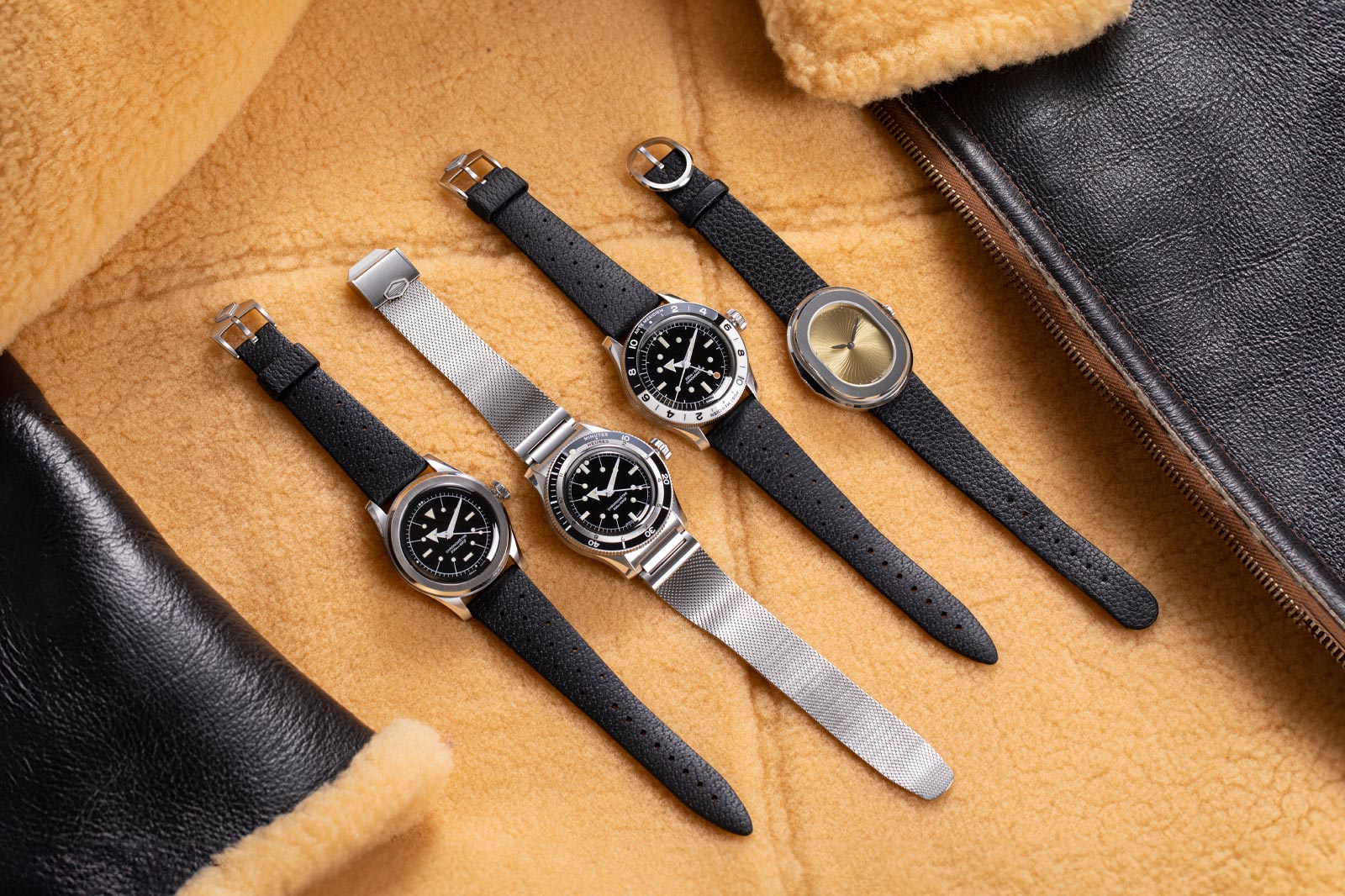


How do you redefine a classic? I don’t mean reinventing the icons of the watch world, riffing on the Fifty Fathoms, Speedmaster, any number of Genta’s 1970s designs, but to rethink something as basic as a tool watch archetype. With so much noise around various references and the legacies of certain watchmakers, how do you rethink something as fundamental, as archetypal as a dive watch? According to Serica, by starting from the drawing board.
The way that Jérôme Burgert, one of Serica’s co-founders, put it is this: “imagine something that could have been done in the ‘60s but wasn’t.” This was the era of horological innovation in tool watches, the decade in which many of the most iconic watches ever built had their genesis. So, what better decade to go back to, before the weight of inimitable history, world firsts and the word ‘iconic’ muddied the waters? If you’re working from a blank slate, you’d probably want to do so in the ‘60s.


So then, what was a dive watch built to do? If you’re going back to the beginning, it’s a basic question you need to ask. The answer, diving, is simple of course but then what does that mean? What does a diver actually require from their timekeeping instrument? Serica’s approach is to look at the necessary specs and figure out how to meet them in as close to a horological void as possible. The result is a lot of fun.
I’m not about to say the Serica 5303 is some intensely revolutionary iconoclast, a watch that redefines everything that’s come before. It’s not. But it is a solid slice of originality in a sub-genre of watchmaking that’s sorely lacking in it.

Diving Chronometer Ref. 5303, €1,490 (approx. £1,280)
Let’s start with the dial. The combination of bars at the edge and circles in the centre might seem a little odd, like an aesthetic quirk more than specs-driven. But look where those circles are. They’re in exactly the right place for the hour hand to touch them, but the minute hand to cross them. There’s simply no mistaking one from another, even at a glance, which in the low-light environment of deep underwater, is a practical necessity. The graphic iron sights at 12 o’clock round off the perfect dive watch ensemble nicely.
While those kind of reference points are all you need for underwater however, most of us like seeing numerals on dry land. Therefore, Serica added a slim 12-hour scale to the unidirectional rotating bezel, along with the usual countdown diving bezel. It not only means that it’s readable no matter how or where you wear it, but that slim double-bezel adds a certain elegance to the overall look of the 5303.

That perhaps is what sets Serica apart. The ‘boardroom to boat’ trope has been trotted out by desk divers aplenty, but the 5303 is a watch that is both elegant and practical in a way that doesn’t blur the line but eliminates it. Again, they’re not the first – I’d argue the Fifty Fathoms is the most elegant dive watch around – but it’s visually distinct and that, as much as anything else, is praiseworthy.
It’s a subtle distinction that’s rendered in high-end materials with sapphire crystals, ceramic bezels and plenty of 316L stainless steel, protected by an anti-magnetic soft iron inner case and fitted with a gorgeous mesh strap. It ticks every box – including COSC certification – and it’s just the start.

Travel Chronometer Ref. 8315, €1,890 (approx. £1,623)
Everything we’ve gone over can apply not just to the 5303 diver, but Serica’s Field Chronometer and Travel Chronometer too. Both share many of the same aesthetics, adapted to their respective arenas. The Travel Chronometer, for example, swaps out that two-lined bezel for a GMT version and adds a funky lollipop GMT hand. To complete the look, it’s set on a sporty, travel-worthy slim rubber strap, emphasised by guilloche end-links. The attention to detail feels expensive.
The Field Chronometer swaps the strap for a fun, painfully retro Bonklip number that’s breathable, comfortable and one of the most underrated straps around. It especially suits the error-proof California dial version, complete with a plain, brushed steel bezel to hammer home its rugged credentials. Another trope Serica nails: rugged yet refined.

Field Chronometer Ref. 6190 M.S.L, €1,090 (approx. £937)
That said, tropes are tropes for a reason: they’re indicators that a whole lot of designers want to achieve the same thing. But whereas most brands are happy to imitate what’s come before and hope they can stand out from the crowd; Serica have tried to come up with their own approach from the same original starting point. How successful they have been kind of relies on personal taste, as do most things watch-related. But the one thing you can’t deny is that they have their own identity – and in the saturated world of tool watches, there aren’t many who can say that.
More details at Serica.
Oracle Time